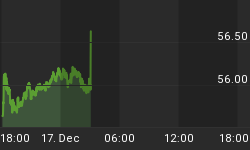Economists and parts of the media are openly debating whether the massive financial support that is being injected into the economy and the resulting unprecedented levels of debt governments are taking on will fuel inflation down the line.
Down the line, of course, is a very open-ended statement. Will the aforementioned government support cause inflation in 3-6 months from now — or 3-6 years?
Either way, data is mixed.
But the U.K.’s Bank of England for the first time in its 324-year history is realistically flirting with the idea embraced by many European central banks to introduce negative interest rates to boost investment.
The Bank of England appears to be in the low inflation camp, while admitting negative rates could have unforeseen ripple effects — hence, it is putting off a decision until the fall to give more time for consideration. However, the bank does not seem unduly worried inflation will be an issue, worrying instead aggregate demand in the economy will be so weak that inflation is the last thing we have to worry about.
What is already clear is growth has plunged and unemployment has soared, despite millions of workers being spared redundancy by government furlough schemes (at least for the time being).
In the U.K., the furlough scheme is to be gradually wound down from the end of July through October. It varies across Europe, but no economy can afford to keep such schemes in place for more than a few months; when they finish, there could be a wave of further job losses.
Some industries are already reacting ahead of the curve where they can see long-term demand destruction. The aerospace industry is a case in point, from Rolls Royce at the manufacturing end who have just announced 9,000 redundancies, to their airline customers, like British Airways who have announced 12,000 redundancies, both on top of already furloughing tens of thousands of staff.
Both aircraft manufacturers and airlines can see their industry is going to suffer a drop in demand for years to come. Wider unemployment will result in a drag on aggregate economic demand, but will that be enough to overcome inflationary pressures from other areas of the economy?
Those same airlines could need to hike fares to survive with social distancing and the very significant reduction in travel options – British Airways and Virgin have pulled all flight operations out of London’s second airport for the foreseeable future – will reduce competition.
Related: Politics Takes Charge Again With Immigration Ban Threat
Weak demand is the main argument for inflation remaining low, but some believe supply constraints and rampant government spending will push up prices, the Financial Times suggests.
Which prevails in the medium term remains to be seen, but two things do seem certain, the paper reports. The first is over the next few months headline inflation will drop dramatically and the second is the official readings will be misleadingly low. The Financial Times noted statisticians calculate inflation using a basket of goods and services that make up a large proportion of the nation’s spending habits under normal conditions. But many of those goods and services barely feature on most households bills at present. Take oil and, hence, gasoline prices. The oil price is low and gasoline prices have fallen dramatically, but no one is traveling in lockdown and fuel consumption is a fraction of normal levels — so how valid is a low fuel price to current inflation?
On the other hand, another example is food, which due to the removal of special offers and discounts, has risen significantly. Yet, because “buy-one-get-one-free” type offers are excluded by the inflation calculation algorithms, the de facto rise in food cost will not be reflected in inflation figures.
Back to the airlines. Airfares do appear in the calculation but many current cheap flights are not even taking place; airlines offer the fares and even sell the seats but then cancel the flight due to travel restrictions.
Even if fares were zero, it would in reality mean little to 95% of the population because few are flying anywhere. So, seemingly low airfares are contributing to low inflation measures yet, in reality, are largely meaningless.
Likewise, spending on social consumption is almost zero and will be slow to come back. In the meantime, the measurement models will be badly skewed by relying on traditional models of consumption. To what extent changes in spending become permanent will determine whether models will need to change. Most economists are probably resigned to using what they know is skewed, unreliable data for the balance of this year, believing in the end consumers will return to pre-pandemic patterns of behavior.
The future is murky on the question of inflation but if anything is to be gleaned it is that with exceptions in certain areas, like possibly foodstuffs, inflation is likely to remain low for the rest of this year.
After government stimulus measures, a fall in the exchange rate due to rapidly rising government debt and supply-side disruptions may have a mildly inflationary impact. However, the depressing effect of high unemployment and low commodity prices are likely to cap rises in the following year.
By AG Metal Miner
More Top Reads From Safehaven.com:
















